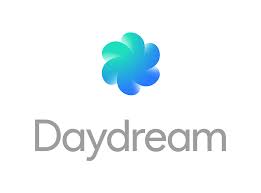Google Introduces its VR Platform for Android: Daydream
admin
- 0
 Virtual and Augmented Reality are hot in tech circles right now. Unfortunately there are very few accessible VR platforms right now. The Oculus Rift requires high end computer hardware, the Playstation VR will require both a Playstation and the headset and the HTC Vive will have its own requirements and hardware. The most accessible virtual reality system has been the Samsung Gear VR, but that is only limited to a handful of Samsung phones.
Virtual and Augmented Reality are hot in tech circles right now. Unfortunately there are very few accessible VR platforms right now. The Oculus Rift requires high end computer hardware, the Playstation VR will require both a Playstation and the headset and the HTC Vive will have its own requirements and hardware. The most accessible virtual reality system has been the Samsung Gear VR, but that is only limited to a handful of Samsung phones.
Google aims to fix this by building out another platform on Android for VR, and it is called Daydream:
“On top of Android N, we’ve built a new platform for high quality mobile VR called Daydream. Together with Android manufacturers, we’re working on upcoming phones, and sharing designs with them for a VR viewer and controller that will be really immersive, comfortable and intuitive to use. Your favorite apps and games will be coming to Daydream too, including Google’s—like YouTube, Street View, Play Movies, Google Photos and the Play Store. More to come this fall.”
This could be the next step that virtual reality has needed to take off with the public:
“Daydream is very much our platform for virtual reality,” says Clay Bavor head of Google VR, not just a headset. The whole project is based on the premise that Google can shape every part of the VR experience, from individual smartphone components to the Android interface itself. “We knew what each [part] was going to look like as we were designing it. Nothing had to be a bolt-on,” he says. And if the phones contain all the tech, the headset itself doesn’t need “extra gizmos” like the Gear VR’s high-accuracy motion tracker. “It can just focus on being light and having great optics.”
Daydream’s remote control, which must ship with any headset, is also fairly simple. A white oblong that Bavor says feels “kind of like a pebble,” its built-in sensors let it detect rotation and (to a more limited extent) movement, allowing users to navigate the interface by using it as a laser pointer. “One of the first things we learn how to do as kids is point, right?” says Bavor. “And analog input — as opposed to buttons for doing things, buttons for aiming — it’s something that everyone gets.”
We can expect all upcoming flagship phones with Android N to have support built in.
